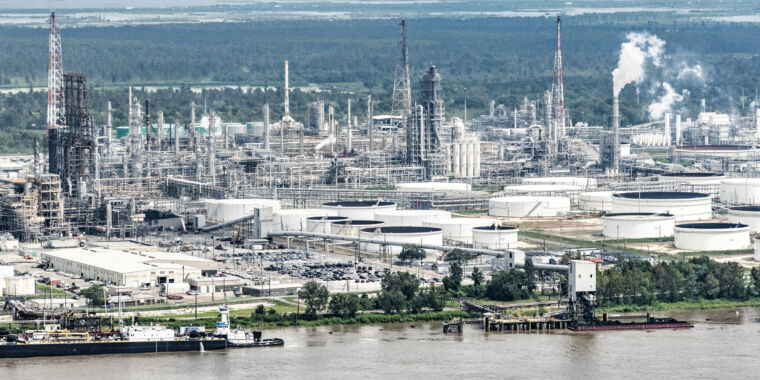EPA Announces New Regulations to Reduce Cancer-Causing Emissions
The US Environmental Protection Agency has recently unveiled new rules aimed at reducing emissions of ethylene oxide and chloroprene, two chemicals known to be linked to increased cancer rates. These chemicals are commonly used in the manufacture of various products and are often associated with petrochemical production sites, notably in Louisiana, which has gained notoriety as “Cancer Alley.”
Regulatory Measures
The new regulations mandate that chemical manufacturers must monitor emissions at their facilities and take corrective actions to address any issues leading to elevated emissions. Despite scientific evidence linking these chemicals to cancer risks, industry groups have voiced opposition to these regulations, resulting in previous regulatory attempts being challenged in court.
Chemical Properties
Chloroprene, a key element in neoprene production, is a mutagen and carcinogen in animals, with potential human carcinogenic properties as well. The National Cancer Institute warns of the dangers associated with exposure to chloroprene, which can lead to various health issues such as skin and organ damage. Ethylene oxide, another chemical under scrutiny, is classified as a cancer-causing substance by the Institute due to its DNA-damaging effects.
Additional Pollutants Targeted
Alongside ethylene oxide and chloroprene, the EPA’s regulations will also address other airborne pollutants like benzene, 1,3-butadiene, ethylene dichloride, and vinyl chloride, all with documented cancer risks. Although these regulations aim to reduce cancer risks significantly, industry groups continue to challenge them, citing scientific uncertainties.
Geographical Focus
High levels of these chemicals are often associated with areas dominated by petrochemical industries, such as Texas and Louisiana. Louisiana’s Cancer Alley, known for its elevated cancer rates due to its concentration of chemical plants along the Mississippi River, serves as a focal point for these regulations.
The EPA’s new rules set limits on emissions at facility fencelines, requiring owners and operators to identify and address sources of pollution promptly. These measures aim to eliminate exemptions for equipment malfunctions and reduce overall emissions by up to 80%, leading to a 96% decrease in cancer risks from these toxins.
While the EPA estimates a compliance cost of around $150 million annually, the benefits in terms of reduced cancer risks and improved air quality are projected to far outweigh these costs. By holding corporations accountable for reducing emissions, the EPA underscores the importance of ensuring air quality standards to protect public health.
Image/Photo credit: source url





